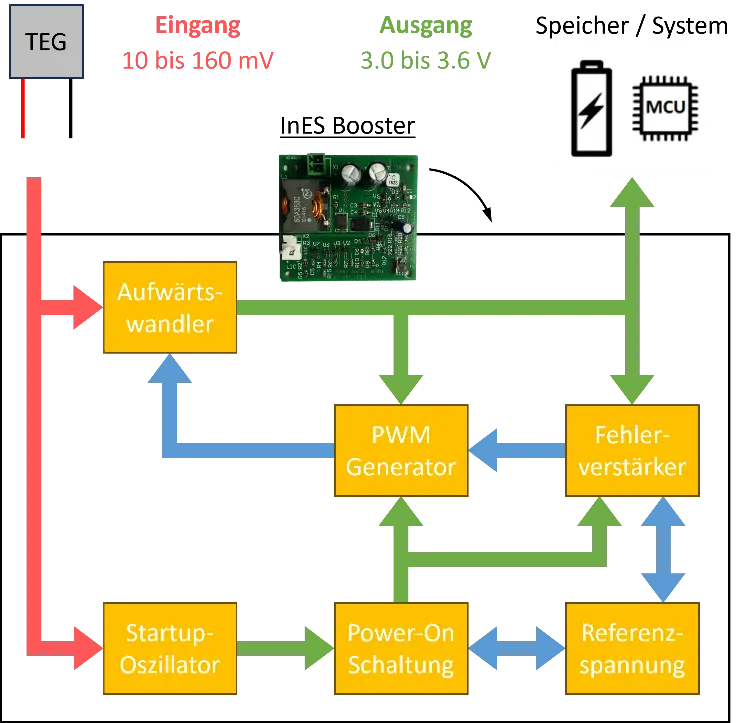Efficient Boost Converter to Use Low Temperature Differences for Energy Harvesting

Developed at the Institute of Embedded Systems (InES), the boost converter makes it possible to efficiently generate electrical energy from minimum temperature differences of less than 1.5 °C. This is an area of application where conventional converters have frequently reached their limits. The developed booster technology enables numerous new applications in conjunction with thermoelectric generators (TEGs).
The core of the development is the ability of the boost converter to start at input voltages of a few 10 millivolts and to achieve high efficiency. A system prototype starts with an input voltage of about 15 mV (cold start) with an efficiency of 45 %. With filled energy storage or from an input voltage of 120 mV, the efficiency increases to up to 74 %. As a result, even low-cost TEGs, exposed to only a slight temperature difference, can gain enough energy to supply sensors and wireless communication in embedded systems.
The design of the converter includes two separate stages: a starting stage for the cold start at low input voltages and a main stage, which provides a controlled output voltage of 3.6 V and achieves high efficiency. This two-step design allows the converter to work efficiently when fed by a TEG that operates at a temperature difference of less than 3 °C.
Comparison tests with commercially available boosters show the potential of the newly developed converter. At a temperature difference of 3 °C, the prototype achieved an efficiency of 62 % and delivered a power of 802 microwatts at the output. It thus significantly expands the application possibilities of energy harvesting from thermal differences in practice and paves the way for new applications in various areas such as condition monitoring, smart homes, or wearables.